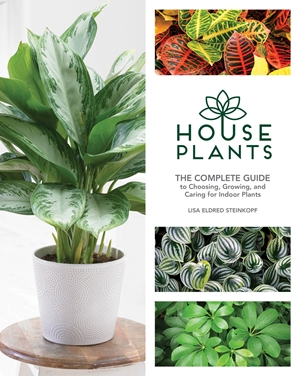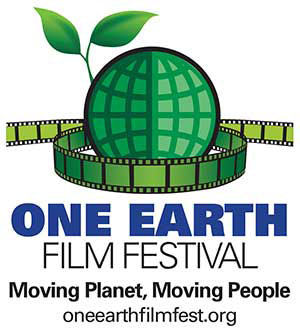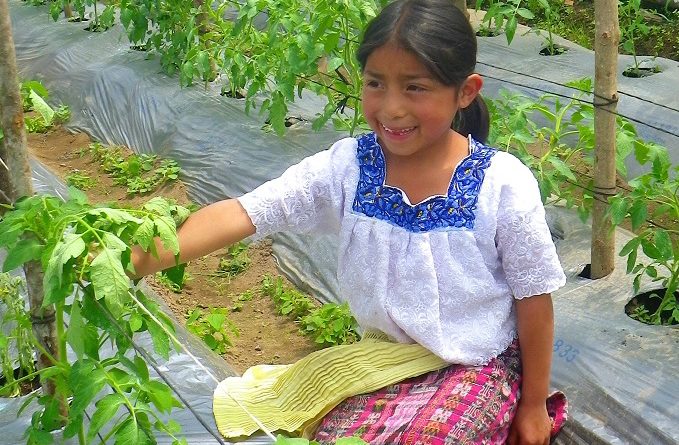February 25, 2018 – Celebrating Our One Earth
![]() I probably should have called this post “Blast from the Past Sunday,” since Peggy and I always celebrate our earth on this program. And on this particular week, I welcome back one person I interviewed almost eight years ago, and another who hasn’t been be on my show since I was at Gargantua Radio Down the Dial. We’re probably talking a dozen years ago or more. Suddenly, I feel very, very old.
I probably should have called this post “Blast from the Past Sunday,” since Peggy and I always celebrate our earth on this program. And on this particular week, I welcome back one person I interviewed almost eight years ago, and another who hasn’t been be on my show since I was at Gargantua Radio Down the Dial. We’re probably talking a dozen years ago or more. Suddenly, I feel very, very old.
So let’s start with Jim Neinhuis, Ph.D., who is a Professor in the College of Agriculture and Life Sciences at the
University of Wisconsin Madison. He will be speaking at the 2018 Great Lakes Bioneers McHenry County Speaker Series twice on Tuesday, February 27. More on that in a bit.
Nienhuis used to appear on my Let’s Talk Gardening show at WGN Radio at the turn of the century, so to speak. He grew up on a vegetable farm in rural Woodstock, Illinois that eventually became Oney’s Christmas Tree farm. It’s hard to believe that, in his own words, “I honestly thought that going to college was only for rich kids from the city—it simply did not occur to me that I too could go to college.”
Not only did he study Agriculture Science at the University of Illinois, he attended graduate school at North Carolina State University and got his Ph.D. at the University of Wisconsin-Madison. And that was after a stint in the Peace Corps, where he learned Spanish in Puerto Rico prior to being sent as an agriculture extension agent to rural, Guanacaste, Costa Rica. That led to his working to control abuse of pesticides by rural farm families.
Which takes us to the Bioneers Speakers Series, where Nienhuis will do two presentations on February 27. The first is at noon and it’s called “Renaissance Art and Vegetables.” In his own words,
- We can often trace the evolution of many of our grain crops because the seeds are dry and can be preserved in archeological sites.
- Not so with vegetables, vegetables by their very nature have a very high moisture content and are perishable, so we do not have an archeological record, but we do have art.
- During the Renaissance, there was a trend towards ‘Natura Morta’ or still life paintings, and those paintings from the 15th and 16th century give us record of what many European vegetables looked like 500+ years ago.
- So next time you go to the Art Institute in Chicago, don’t look for the Rembrandts, look for the vegetables.
Then, from 6 to 8pm, it’s “Women Farming Cooperatives in Central America.” He notes that Tomato and pepper production can be among the most profitable sources of income and food security for many single mothers and women’s cooperatives in rural areas of tropical Central America. On a project funded by USAID through the University of California-Davis, Dr. Neinhuis’s lab has worked as the lead institution in a truly international project to promote sustainable vegetable production in rural areas of Guatemala, Nicaragua, Honduras and Costa Rica. He writes,
Tomato grafting is a proven technology that is being increasing adapted worldwide in both temperate and tropical countries to reduce risk of soil borne pathogens and provide more sustainable production. In many tropical countries tomato production is not simply reduced, but often at risk of complete loss due to soil borne pathogens, impacting the livelihood, stability and nutrition of families in rural areas of Central America. Grafting produces a physical hybrid plant – the rootstock is chosen for its genetic ability to resist soil borne disease, and the scion is chosen based on fruit quality for commercialization. Through a series of hands-on workshops, we have field-tested grafted tomato combinations in lowland San Carlos in Costa Rica and with a women’s cooperative near Zamorano, Honduras and a rural cooperative in Totonicapan, Guatemala.
In this way, they are helping entrepreneurial women’s groups to specialize in the production of grafted seedlings, thereby increasing yields and profits.
Houseplants as an obsession
I have more houseplants than most people I know–probably forty or so–but that pales in comparison to Lisa Eldred Steinkopf. I suppose that if you’re going to be known as The Houseplant Guru you’d better have experience growing a lot of plants. In her case, according to a recent Detroit News article,
She has more than 200 on the first floor alone of her eclectic Livonia home, everything from succulents and cacti to ferns and snake plants. Many are grown in a sunroom she and her husband converted into a greenhouse.
 So it’s not surprising that she has come out with a book called Houseplants: The Complete Guide to Choosing, Growing, and Caring for Indoor Plants. It’s a lovely hardcover book and, at 272 pages, has pretty much everything you need to know to get started.
So it’s not surprising that she has come out with a book called Houseplants: The Complete Guide to Choosing, Growing, and Caring for Indoor Plants. It’s a lovely hardcover book and, at 272 pages, has pretty much everything you need to know to get started.
Among the sections are planting; watering and fertilizing; lighting; environment, grooming and propagation; problem solving; and specialties. There’s also a plant profiles section that is divided into three sections: easy to grow, moderately easy to grow, and challenging to grow. Steinkopf has some words of wisdom for novices who would like to grow plants:
There is no such thing as a natural green thumb. Many believe either you are born with one or not. The claim of having a brown or black thumb has had many dead plants placed at its doorstep. Yet having a green thumb is just a matter of paying attention to the needs of your plants and noticing when they are trying to tell you something. Killing a plant or two (or more) is not a crime, and can be a good learning experience.
In fact, in the Detroit News story, she states, “If you don’t kill a plant there’s something wrong with you.”
I would add my own corollary to that: “If you kill the same plant over and over again there’s something wrong with you.” I think I might have that printed up on t-shirts.
One Earth Film Festival is bigger than ever
The Midwest’s premier environmental film festival is back for 2018. The 7th Annual One Earth Film Festival, a production of Green Community Connections, creates opportunities for understanding climate change, sustainability and the power of human involvement through sustainability-themed films and facilitated discussion.
 The theme this year is “This is the Moment,” and the fest features 30 award-winning films at 50 locations throughout Chicagoland, including showings in Indiana. Among the ancillary events are the One Earth Young Filmmakers Contest, International Women’s Day screenings on March 8, the One Earth Online Auction, and the Green Carpet Gala this Friday, March 2, where Peggy Malecki and I will be interviewing various luminaries from the festival, while sipping champagne (I hope).
The theme this year is “This is the Moment,” and the fest features 30 award-winning films at 50 locations throughout Chicagoland, including showings in Indiana. Among the ancillary events are the One Earth Young Filmmakers Contest, International Women’s Day screenings on March 8, the One Earth Online Auction, and the Green Carpet Gala this Friday, March 2, where Peggy Malecki and I will be interviewing various luminaries from the festival, while sipping champagne (I hope).
This morning we welcome One Earth Film Festival director and founding member Ana Garcia-Doyle, who will walk us through the various aspects of the event, which runs from March 2-11.
But another guest today takes me back to “Blast from the Past Sunday.” In 2010, I interviewed film director Chanda Chevannes about a documentary she had put together, Living Downstream, based on a book of the same name by Illinois native and now-iconic environmentalist Sandra Steingraber, Ph.D. about her journey in dealing with a diagnosis with bladder cancer more than thirty years ago.
They are working together again, this time on a film called Unfractured, the story of the battle to ban hydraulic fracturing–or fracking–in New York State. It’s a remarkably intimate look at the personal and public price of waging a battle against the fossil fuel industry. As the film opens, Steingraber (a “toxic avenger” according to Rolling Stone) is fighting for a state-wide ban on fracking, just as her husband suffers a series of debilitating strokes. Nevertheless–to coin a phrase–she persists:
Unfractured offers an intimate perspective on an epic battle. We watch as Sandra debates the gas industry, delivers fiery rally speeches, and marches alongside other protestors. But when Sandra realizes that scientific evidence alone is not enough to win a ban, she visits anti-fracking activists in Romania, who have inspired her from afar. In Romania, she is trailed by unmarked cars and pepper sprayed by police. Back at home and motivated by her experiences abroad, Sandra joins with her neighbours to lead a civil disobedience campaign, is arrested for blockading a gas storage site, and is hauled away to jail.
It shows the lengths that are necessary to seriously engage in what has become environmental warfare in the United States and across the planet.
One other guest this morning is Linda Booker, director of a film called Straws, described as “a documentary for a sea of change…one plastic straw at a time.” It calls attention to an issue that has suddenly become a bit of a cause célèbre. Her film is only 30 minutes long, but in that time, Booker manages to shine a light on an unfolding environmental catastrophe…that we have the power to stop. As she notes,
It’s estimated every day 500,000,000+ plastic straws are used once and tossed in the U.S. alone. Ocean Conservancy ranks straws as the #5 most found litter item on beaches. They’re non-recyclable, so they wind up in landfills, litter streets and add to the estimated 8.5 million metric tons of plastic debris in oceans annually.
This ties in to an experience that Peggy and I had at the Shedd Aquarium earlier this month. We were at a meeting for a Chicagoland Excellence in Gardening Awards (CEGA) planning meeting, we were amazed, and then terrified, by a series of sculptures created by artist Angela Haseltine Pozzi and the team at the Washed Ashore Project (check out the video of Zorabelle the Rockhopper penguin). They’re part of a traveling exhibit of aquatic animal sculptures, and they’re made entirely of plastic trash picked up along Pacific Ocean beaches.
This exhibit is part of the Shedd’s campaign to raise awareness and educate about the effects of single-use plastic on marine environments. The Shedd created an informative portal on their website as part of their #SheddTheStraw campaign, an ongoing effort launched in April 2017 to reduce single-use plastic straws across the Chicago area. Visitors can learn about plastic pollution, take an online pledge to choose alternatives to single use plastics, sign up for a beach clean-up and RSVP for the One Earth Film Festival’s March 2 screening of “Straws”. And, the aquarium is walking its own talk. According to their website,
The aquarium has eliminated single-use plastics, such as straws, utensils, individual condiment containers and shopping bags, from its restaurants and stores while also providing plastic recycling receptacles for guests and staff members. Shedd even received the “Outstanding Non-Profit Recycling and Waste Reduction Program” award from the Illinois Recycling Association.
The effort has gone nationwide, and Shedd is a founding member of the Aquarium Conservation Partnership (ACP), a group of more than 20 accredited aquariums across the US focused on educating and leading the way in reducing plastic pollution using “a mixture of consumer, business and policy strategies” via their In Our Hands campaign.
Peggy and I are pleased that The Mike Nowak Show is a media sponsor for the One Earth Film Festival, and just as pleased to be able to talk filmmakers who are changing the planet for the greater good.

